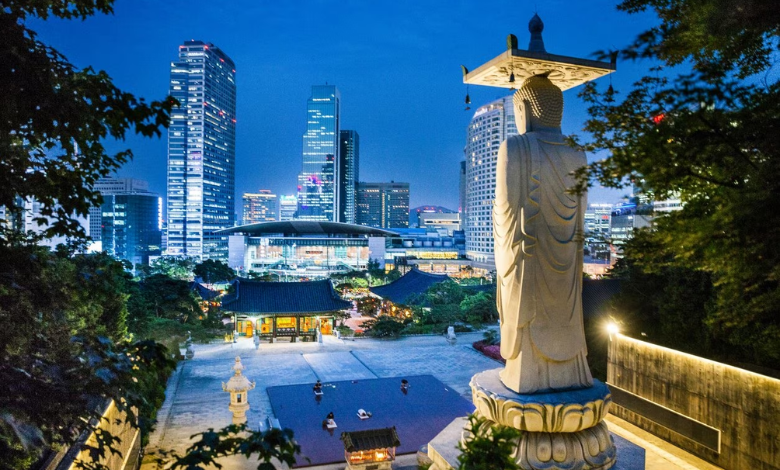Traveling during the teenage years can be immensely beneficial for personal growth and learning. Here’s why it’s so important:
- Broadening Perspectives: Travel exposes teenagers to different cultures, languages, and ways of life, which can significantly broaden their worldview. Experiencing diverse social norms and lifestyles firsthand promotes tolerance and understanding, helping teens appreciate global diversity beyond their local experiences.
- Developing Independence and Confidence: Travel challenges teenagers to step out of their comfort zones. Whether it’s navigating a new city, trying to communicate in a foreign language, or making decisions on the fly, these experiences build independence and confidence. Managing money, planning logistics, and dealing with unexpected situations also foster maturity.
- Enhancing Education: Travel is education outside the classroom. It brings history, geography, and sociology to life. Visiting historical sites, natural wonders, and engaging in local customs makes learning engaging and interactive. This direct interaction with different environments can ignite a passion for learning and potentially guide future academic interests and career choices.
- Encouraging Adaptability and Problem-Solving Skills: Travel often involves unexpected changes of plans—flights can get delayed, weather can change, and itineraries may shift. This environment helps teens learn to adapt quickly and develop problem-solving skills. Being adaptable and able to handle challenges is a valuable life skill that will benefit teenagers long into adulthood.
- Strengthening Relationships: Traveling with family or friends can strengthen bonds through shared experiences. For teenagers, building strong relationships is key to emotional development. Moreover, meeting new people and making friends from different backgrounds can enhance social skills and empathy.
- Fostering Reflection and Self-Discovery: Being in new places can inspire teens to reflect on their personal values, beliefs, and goals. The change of environment and pace can provide space for introspection and may help them understand themselves better in contrast to the larger world.
- Encouraging Physical Activity: Travel often includes activities that involve physical exercise such as hiking, walking through museums, or swimming at the beach. Regular physical activity is beneficial for both physical and mental health, helping reduce stress and increase overall well-being.
- Creating Lifelong Memories: The experiences teens have while traveling often create vivid memories that they will cherish for a lifetime. These memories can be a source of joy and nostalgia, and the stories gained from traveling can be shared with others, enriching their social interactions.
Overall, travel can play a crucial role in a teenager’s development, offering a unique educational experience that equips them with vital life skills, enriches their personality, and enhances their understanding of the world.
South Korea: A Blend of Tradition and Technology
Seoul’s Urban Landscape

Experiencing high-tech city life in Seoul, South Korea, is an adventure in modernity and tradition. The city features impressive skyscrapers like the Lotte World Tower and cutting-edge architecture, showcasing South Korea’s commitment to innovation. Seoul’s integration of advanced technology is evident in its efficient public transport systems, widespread high-speed internet, and digital amenities.
Shopping in districts like Myeongdong presents the latest in fashion and tech, while markets like Yongsan offer the newest electronic gadgets. The street food scene mixes traditional Korean snacks with modern culinary trends, providing a taste of both old and new Korea.
Nightlife thrives in vibrant areas like Gangnam and Hongdae, with their mix of K-pop venues and themed bars, all enhanced by state-of-the-art entertainment technology. Despite the modern landscape, traditional Korean culture remains vibrant, with historic sites like Gyeongbokgung Palace providing a stark contrast and a reminder of the country’s rich heritage. This blend of the future and the past makes Seoul a fascinating destination for anyone interested in how technology and tradition can coexist.
In Seoul, visitors can explore a blend of futuristic and historical landmarks. The Dongdaemun Design Plaza, designed by Zaha Hadid, is a marvel of modern architecture, hosting various exhibitions and design events. Nearby, Myeongdong offers a vibrant shopping experience with its mix of international brands and local Korean shops, alongside food carts serving traditional Korean street food.
In contrast, the historic Gyeongbokgung Palace allows a glimpse into the past with its traditional Korean architecture and cultural displays, such as the royal guard changing ceremony. Together, these sites showcase Seoul’s dynamic balance of embracing the future while preserving its heritage, making the city a fascinating destination for all.
Cultural Richness
South Korea’s rich history and cultural traditions are deeply rooted in its past, stretching back thousands of years, and are visible in its daily life, ceremonies, and historical sites today.
Historical Background: Korea’s history dates back to 2333 BC with the founding of Gojoseon, the first Korean kingdom, according to legend. Over the centuries, the peninsula was ruled by various dynasties such as the Goryeo and Joseon, each leaving its imprint on the nation’s cultural fabric. The Joseon Dynasty, in particular, significantly shaped Korea’s cultural identity, promoting Confucian ideals and traditions that are still revered today.
Cultural Traditions:
- Hanbok: The traditional Korean attire, known as hanbok, is a significant cultural symbol. Worn during festivals, weddings, and traditional holidays like Chuseok (Korean Thanksgiving) and Seollal (Lunar New Year), hanbok is celebrated for its vibrant colors and simple lines.
- Cuisine: Korean cuisine is another pillar of its culture, characterized by its variety of flavors and ingredients. Dishes such as kimchi (fermented vegetables), bibimbap (mixed rice), and bulgogi (marinated beef) are not only staples but also a part of Korea’s social rituals.
- Tea Ceremony: The traditional Korean tea ceremony reflects the deep philosophical roots of simplicity and tranquility. It is a meditative process that emphasizes the harmony between nature and humans.
- Folk Music and Dance: Traditional music and dance like pansori (narrative singing) and buchaechum (fan dance) play an essential role in preserving Korea’s cultural heritage. These art forms often depict stories of historical events, seasonal changes, and everyday life.
- Architecture: Traditional Korean architecture, seen in structures like hanok (houses) and various palaces around Seoul, incorporate principles of harmony with nature. The use of natural materials and the distinctive curved roofs of buildings, alongside the layout of complexes, align with Confucian, Buddhist, and Taoist principles.
Preservation and Education: South Korea actively preserves its historical sites and traditions through museums, cultural centers, and educational programs. Institutions like the National Folk Museum and the War Memorial of Korea in Seoul play a crucial role in educating both Koreans and visitors about the country’s history and cultural practices.
South Korea’s rich historical and cultural heritage is a testament to its long and complex past. These traditions not only define the nation’s identity but also continue to influence its modern lifestyle, making South Korea a unique blend of the old and the new.
Experiencing traditional Korean culture through activities like wearing a Hanbok, participating in a tea ceremony, and exploring folk villages offers a deep connection to South Korea’s rich heritage:
Wearing a Hanbok: The Hanbok, traditional Korean attire, is known for its vibrant colors and graceful shapes. Wearing it, especially during festivals or visits to historic sites, allows individuals to step back in time and experience historical Korea.
Participating in a Tea Ceremony: The Korean tea ceremony, or ‘darye,’ focuses on respect, tranquility, and enjoying tea naturally. It’s a reflective practice that encourages mindfulness and offers a peaceful break from modern life.
Exploring Folk Villages: Folk villages like the Korean Folk Village in Yongin showcase traditional Korean life. These living museums display hanoks (traditional houses) and offer demonstrations of centuries-old crafts, providing insights into Korea’s social history and daily life in the past.
These activities are not just about observing but actively engaging with the cultural practices that define and enrich Korean heritage.
Portugal: Coastal Charm and Historic Wonders
Lisbon’s Historical Heart

Exploring Lisbon, Portugal’s coastal capital, offers a captivating experience characterized by its unique blend of traditional charm and contemporary vibrancy. Known for its hilly, cobblestoned streets and iconic yellow trams, Lisbon invites visitors to delve into its rich history while enjoying its lively modern culture.
Hilly and Cobblestoned Streets: Lisbon is famously built on seven hills, which gives the city its distinctive, layered appearance. Walking through neighborhoods like Alfama, Bairro Alto, and Chiado, you encounter narrow, winding streets lined with traditional pastel-colored buildings adorned with azulejos (ceramic tiles). These cobblestoned streets, some offering spectacular views over the Tagus River, are quintessentially Lisbon and are steeped in history, echoing centuries of footsteps.
Vibrant Trams: The trams of Lisbon, especially Tram 28, are not just a mode of transport but a cultural icon. These yellow trams, dating back to the early 20th century, rattle and screech through the city’s tight corners and steep inclines, providing an authentic and scenic way to explore. Riding these trams offers a picturesque journey through the city’s most historic quarters, passing by major attractions such as the São Jorge Castle, the Se Cathedral, and numerous viewpoints.
Experience and Atmosphere: Exploring Lisbon by foot and tram not only allows visitors to see the major sites but also to feel the pulse of the city. The blend of music from Fado houses, the aroma of traditional Portuguese dishes from local eateries, and the buzz from its vibrant squares and cafes enrich the experience. Lisbon’s streets are alive with a rhythm that combines its maritime past with a modern, creative spirit.
In summary, Lisbon’s hilly, cobblestoned streets and vibrant trams are emblematic of its character as a city that honors its rich maritime history while embracing a lively, artistic present. Exploring Lisbon offers both a step back in time and a taste of contemporary urban life in one of Europe’s most charismatic capitals.
Exploring Lisbon is a delightful experience, combining historical sites, local flavors, and scenic tram rides. Here’s a concise guide:
- Visit Jerónimos Monastery: This UNESCO World Heritage site in the Belém district showcases stunning Manueline architecture and houses the tomb of explorer Vasco da Gama. It’s a window into Portugal’s maritime history and architectural artistry.
- Sample Pastéis de Nata: Try the famous Portuguese egg tart, pastéis de nata, especially in Belém where the original recipe offers a crispy, creamy treat best enjoyed warm with a sprinkle of cinnamon.
- Tram Ride Through Historic Neighborhoods: Board the iconic Tram 28 to wind through Lisbon’s historic districts like Alfama and Baixa. This scenic ride provides picturesque views of traditional architecture and lively street scenes, capturing the essence of Lisbon’s charm.
These activities provide a comprehensive snapshot of Lisbon, blending its rich history with delicious cuisine and charming city views.
Porto’s Riverfront Beauty
Porto, Portugal’s second-largest city, is renowned for its captivating charm, particularly evident in its riverfront district and iconic bridges. The city, steeped in history and tradition, offers a picturesque setting that combines old-world allure with vibrant cultural life.
Riverfront District (Ribeira): The Ribeira district is one of the most picturesque parts of Porto, located along the Douro River. This area is characterized by its narrow, cobbled streets lined with colorful, ancient houses that seem to stack up behind one another. The riverfront promenade is bustling with activity, filled with street performers, local artisans, and quaint cafes and restaurants where visitors can sample traditional Portuguese dishes while enjoying the view of the river. The Ribeira Square, a UNESCO World Heritage site, is a popular spot, offering stunning views across the river to the wine cellars of Vila Nova de Gaia.
Famous Bridges: Porto’s dramatic landscape is punctuated by several bridges that span the Douro River, connecting Porto to Vila Nova de Gaia. The most famous of these is the Dom Luís I Bridge, a double-deck metal arch bridge that dominates the cityscape. Designed by a disciple of Gustave Eiffel, it is an architectural marvel that provides spectacular panoramic views of the city from its upper deck, which is accessible to pedestrians and trams. Another notable bridge is the Maria Pia Bridge, also designed by Eiffel, which was a feat of engineering upon its completion.
The combination of historical ambiance, cultural vibrancy, and the engineering marvels of its bridges makes Porto’s riverfront district a captivating destination. Visitors are treated to a vivid tapestry of sights, sounds, and flavors that embody the spirit of this unique city, making it a must-visit for those seeking to experience the essence of Portugal.
Exploring Porto offers a rich blend of experiences that showcase its cultural heritage and scenic beauty:
Porto Wine Cellars: Known globally for its Port wine, tours of the wine cellars in Vila Nova de Gaia include educational insights into the wine’s production and history, capped with tastings of various Port wines.
Douro River Boat Tour: A boat trip on the Douro River provides panoramic views of Porto’s historical architecture, the terraced vineyards, and iconic bridges, offering a tranquil contrast to the bustling cityscape.
Livraria Lello Bookstore: Renowned for its stunning neo-Gothic architecture, Livraria Lello is one of the world’s most beautiful bookstores. It’s a cultural landmark that appeals to book lovers with its intricate design and extensive collection, rumored to have inspired J.K. Rowling.
These experiences collectively capture the essence of Porto, from its rich wine heritage to its literary and architectural grandeur, providing a diverse and memorable exploration of the city.
South Africa: Adventure and Wildlife
Cape Town’s Natural Wonders

Cape Town, South Africa, is renowned for its stunning landscapes and vibrant outdoor adventure scene. Nestled between the iconic Table Mountain and the Atlantic Ocean, the city offers a plethora of activities that make the most of its unique natural surroundings.
Table Mountain: Dominating Cape Town’s skyline, Table Mountain is a must-visit for anyone coming to the city. Adventurers can take the cable car up to the summit for spectacular panoramic views or hike up one of the many trails for a more immersive experience. The mountain is home to diverse flora and fauna, offering opportunities for nature photography and wildlife spotting.
Beaches and Surfing: Cape Town’s beaches are world-famous, with spots like Camps Bay and Clifton providing beautiful sandy shores and vibrant social scenes. For surfing enthusiasts, the beaches around the Cape Peninsula, from the gentle waves at Muizenberg to the challenging swells at Dungeons, offer a variety of experiences for different skill levels.
Hiking and Biking: The natural terrain around Cape Town is perfect for hiking and mountain biking. The trails in the Cape Point Nature Reserve offer scenic views of rugged cliffs, sweeping bays, and vast ocean expanses. For a more structured adventure, numerous guided tours cater to all fitness levels.
Paragliding: For a bird’s-eye view of the city, paragliding off Lion’s Head and over the Atlantic Seaboard presents a thrilling perspective of Cape Town’s picturesque landscape.
Kayaking and Stand-Up Paddleboarding: Paddling in the waters around Cape Town provides a peaceful yet exhilarating way to explore the coastline. Kayakers often encounter marine life such as dolphins, seals, and, during certain seasons, even whales.
Cape Town’s combination of mountainous terrain, lush national parks, and expansive ocean fronts makes it an ideal destination for outdoor enthusiasts. Each activity not only offers adventure but also showcases the stunning natural beauty that makes Cape Town one of the most picturesque cities in the world.
Exploring Cape Town’s natural wonders offers a variety of unique experiences:
Hike up Table Mountain: Hiking up Table Mountain is a favorite activity, offering several trails that culminate in breathtaking views of Cape Town and its surroundings. The Platteklip Gorge route is the most direct, providing a rewarding challenge for adventurous visitors.
Visit the Cape of Good Hope: Located within the Table Mountain National Park, the Cape of Good Hope features dramatic ocean vistas and rugged landscapes. It’s perfect for a scenic drive or a hike, with rich biodiversity and historical significance.
See Penguins at Boulders Beach: Boulders Beach in Simon’s Town is renowned for its resident African penguin colony. Visitors can watch these charming birds from close-range boardwalks, making it an ideal spot for wildlife viewing and enjoying the beach.
These experiences showcase the diverse natural beauty and wildlife of Cape Town, from majestic mountain hikes and scenic coastal drives to intimate encounters with native penguins.
Safari in Kruger National Park
Embarking on a safari adventure in one of the world’s most famous wildlife reserves offers an unforgettable experience that brings you face-to-face with some of the planet’s most awe-inspiring animals in their natural habitats. These reserves, such as the Serengeti in Tanzania or the Kruger National Park in South Africa, are renowned for their biodiversity and the opportunity to witness a wide range of wildlife.
Wildlife Viewing: A safari in a top wildlife reserve allows you to see iconic species such as lions, elephants, leopards, rhinos, and buffalos—often referred to as the “Big Five.” Beyond these, you’re likely to encounter a plethora of other animals like giraffes, zebras, cheetahs, hyenas, and various antelope species. The diversity of wildlife ensures that each safari drive is unique, offering new sights and experiences.
Guided Safari Drives: Most safaris are conducted in open vehicles, which provide unobstructed views of the animals and the landscape. Guided by experienced rangers and trackers, these drives are not only safe but also educational, as guides share their knowledge of wildlife behavior, conservation efforts, and the ecosystem. Some reserves also offer walking safaris for a more immersive experience, allowing you to appreciate the smaller flora and fauna that might be missed when in a vehicle.
Conservation and Community: Many of the world’s leading wildlife reserves are deeply committed to conservation efforts. Visiting these reserves helps support these initiatives, as part of the tourism revenue is often directed towards preserving wildlife and supporting local communities. Furthermore, community visits can also be part of the safari experience, providing insight into the local cultures and traditions.
The Experience: A safari adventure is not just about seeing animals—it’s about experiencing the rhythm of nature. It’s the thrill of early morning drives, the peacefulness of sunsets over the savannah, and the nighttime sounds of the wild. It offers a profound connection to nature that is both exhilarating and humbling.
Overall, a safari in one of the world’s famous wildlife reserves is an extraordinary journey into the heart of nature, offering a blend of adventure, education, and reflection on the importance of conservation and cultural respect.
Experiencing a safari offers a blend of thrilling and educational activities:
Wildlife Viewing of the Big Five: Spotting the Big Five (lions, leopards, elephants, buffaloes, and rhinos) in their natural habitats provides a captivating glimpse into Africa’s diverse ecosystems and wildlife dynamics.
Guided Safari Drives: Conducted in open vehicles, these drives are led by knowledgeable guides who enhance the experience by sharing insights into animal behaviors and the environment. Drives typically occur in the early morning or late afternoon when wildlife is most active.
Sunset Bush Walks: These guided walks offer an intimate encounter with the African bush, focusing on smaller ecosystem elements and traditional tracking techniques. The walks usually culminate in a picturesque spot, perfect for watching the sunset in the tranquility of nature.
Together, these activities form a comprehensive safari experience that combines adventure with nature education and conservation awareness.
Culinary Journey Through Each Country
South Korea’s Street Food and BBQ
Exploring various Korean dishes offers a delightful culinary journey through the rich flavors and unique cooking techniques of Korea. Three iconic dishes that showcase the diversity of Korean cuisine are kimchi, bibimbap, and Korean BBQ.
Kimchi: Kimchi is a staple in Korean cuisine, made from fermented vegetables, most commonly napa cabbage and Korean radishes, with a variety of seasonings including chili powder, garlic, ginger, and scallions. This side dish is served with nearly every meal, providing a crisp, tangy, and spicy flavor that enhances the overall dining experience. Kimchi is also known for its health benefits, including high levels of vitamins, fiber, and probiotics.
Bibimbap: Bibimbap translates to “mixed rice” and is one of Korea’s most famous dishes. It consists of a bowl of white rice topped with assorted vegetables, chili pepper paste (gochujang), and usually a raw or fried egg and sliced meat. The ingredients are stirred together thoroughly just before eating, creating a flavorful and satisfying meal that is both colorful and nutritious.
Korean BBQ: Korean BBQ refers to the popular method of grilling meat, typically beef, pork, or chicken, which is cooked at the diner’s table on gas or charcoal grills. This interactive dining experience often involves marinated meats such as bulgogi (marinated beef sirloin) and galbi (marinated beef short ribs), which are cooked and then typically wrapped in lettuce with garlic, chili paste, and other condiments.
Each of these dishes provides a taste of Korea’s culinary traditions, characterized by bold flavors, varied textures, and healthful ingredients. Whether it’s the spicy ferment of kimchi, the hearty mix of bibimbap, or the savory delights of Korean BBQ, Korean cuisine offers something to satisfy every palate.
Portugal’s Seafood and Sweets
Experiencing traditional Portuguese cuisine offers a delicious exploration of the country’s rich culinary traditions, particularly through its renowned seafood dishes and iconic desserts.
Seafood Dishes: Portugal, with its extensive coastline, is famous for its variety of seafood dishes, and bacalhau (salted cod) is arguably the most iconic. Often referred to as the Portuguese national dish, bacalhau boasts over 365 preparation methods, one for each day of the year. Common preparations include Bacalhau à Brás (shredded cod with onions, potatoes, and eggs) and Bacalhau com Natas (cod baked with cream). Other popular seafood includes grilled sardines, octopus, and a variety of shellfish, all commonly enhanced with Portugal’s abundant olive oil, garlic, and wine.
Desserts: Portuguese desserts are equally cherished, with Pastéis de Nata (custard tarts) leading as a beloved treat. These tarts consist of a crispy pastry shell filled with a rich, creamy custard that’s often sprinkled with cinnamon and powdered sugar before serving. Originating from the Lisbon area, these tarts have gained international fame for their delightful combination of textures and flavors. Other traditional sweets include arroz doce (sweet rice pudding) and toucinho do céu (a dense almond cake), both of which reflect the country’s preference for egg-based confections.
Tasting these dishes provides a deeper appreciation for Portuguese culture, reflecting centuries of maritime history and conventual influences that have shaped the nation’s palate. Whether savoring the layers of flavors in a bacalhau dish or indulging in the sweet, custardy bliss of a pastel de nata, each bite offers a piece of Portugal’s culinary heritage.
South Africa’s Braai and Biltong
Exploring South Africa’s barbecue culture offers a delightful journey into its culinary heritage and vibrant social traditions. Known locally as “braai,” this cultural practice goes beyond mere cooking; it’s a cherished way of life. Picture gathering with friends and family around an open fire, the tantalizing aroma of sizzling meat filling the air, accompanied by laughter and lively conversation.
Biltong, a beloved South African snack, is a must-try for any visitor. This dried and cured meat, often made from beef or game meats like ostrich or springbok, is seasoned with a blend of spices like coriander, salt, and pepper, then left to air-dry. The result is a flavorful, protein-packed treat that’s perfect for nibbling on during outdoor adventures or as a snack anytime.
Sampling biltong offers a taste of South Africa’s rich culinary heritage, rooted in its diverse cultural influences. Whether enjoyed at a local market, a traditional braai, or a trendy café, biltong provides a savory insight into the country’s flavors and traditions. So, dive into South Africa’s barbecue culture, savor the warmth of its hospitality, and indulge in the deliciousness of biltong for an unforgettable culinary experience.
Conclusion
South Korea, Portugal, and South Africa offer teenagers a captivating blend of adventure, culture, and natural beauty. South Korea’s dynamic fusion of tradition and technology, Portugal’s coastal charm and historic allure, and South Africa’s breathtaking landscapes and diverse wildlife promise unforgettable experiences. From exploring Seoul’s vibrant cityscape to wandering through Lisbon’s historic streets and embarking on safaris in Kruger National Park, each destination invites teens to broaden their horizons and create lasting memories. Encouraging young travelers to consider these destinations opens doors to cultural immersion, outdoor exploration, and personal growth, ensuring an enriching and unforgettable journey.












